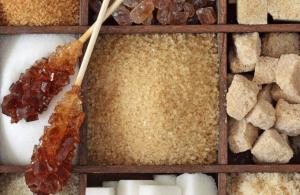Crimean photoblogger Sergei Anashkevich aka aquatek-filips writes: “What is the first thing you think of when you hear the word “Calvados”? There is a high probability that this is Erich Maria Remarque and his Arc de Triomphe. It was after this novel that the whole world learned about the local Norman drink Calvados and wanted to try it.
A fragrant drink of a thousand apples, which lives in a barrel for years under the close attention of the cellar master, only to one day break free. This is what real Calvados is. But just recently they knew almost nothing about him...
In today’s photo story you will visit hundreds of barrels in cellars located in the Pays d’Auge appellation, where the best Calvados is made.”
(Total 43 photos)

1. In fact, Calvados should definitely appeal to all fans of Steve Jobs and Apple products. After all, Calvados is made from apples and in many images associated with it there is an apple. True, not bitten. The photo shows the basement of the Boulard distillery.

2. Where does Calvados begin?
And it starts with Calvados. This is the department in Normandy whose name the drink is named after. And only the drink that is produced in this department can be called Calvados (by analogy with cognac and champagne). Everything else is apple brandy. It is here that millions of apples are grown, which then find a second life in barrels and bottles.
Like most other regional French products with a long tradition of production, Calvados is produced in strict accordance with the Appellation d’Origine Controlee or AOC (translated as Appellation of Origin Controlled) system. We are talking about a set of rules that guarantee the authenticity of a product made in a specific territory and determine the methods of its production as close as possible to traditional ones.
There are three appellations of Calvados - basic (about 70% of all production), Pays d'Auge and Domfrontet. At the same time, Pays d'Auge is distinguished by the highest quality (I will discuss the differences in detail below), and Domronte contains pears in Calvados with a share of at least 30%

3. The basis of Calvados is apples.
Manufacturers use only small and very aromatic apples. They are called “cider apples.” There are hundreds of varieties of apples grown in Normandy, but only 48 of them are recommended in the Pays d'Auge. Unlike wine, which is made using one or just a few grape varieties, Calvados requires a combination of aromas and flavors from many different varieties.

4. Depending on acidity, bitterness, sugar and tannin content, Calvados apples are divided into four categories - bitter, bittersweet, sweet and sour. Producers, strictly following traditions, grow from 20 to 40 varieties of apples. For Calvados Domfronte, special varieties of pears are grown.

5. Only by combining different varieties of apples will Calvados acquire the necessary softness, aroma and rich taste. Usually they take 10% bitter apples, 70% sweet and sour, a little sweet and about 20% sour. In Domront, 30 percent or more of pears are used. This Calvados turns out to be more fruity. Apple picking season is September.

6. Between apples and Calvados there is another intermediate product - cider. To obtain it, apples must be crushed or crushed after collecting and washing. To do this, the apples go into a special press, which crushes them to the desired consistency. After grinding, the pulp (or fruit mass) is kept in a special container for several hours, where it is macerated. What is it for? The fact is that most of the taste and aroma comes from the peel of the fruit. After maceration, the pulp goes to the press, where the juice is separated from the cake. About 650 liters of juice are obtained from one ton of apples.

7. The next stage is fermentation of the cider. To do this, the juice is poured into large oak barrels, where it remains for about 6 weeks. The best producers ferment the cider longer, and sometimes even age it a little before distilling it. Large producers, as a rule, do not grow apples themselves and do not make cider, purchasing it as raw material from proven farms in the appellation.

8. During the production of cider, the alcohol content is controlled, which must be at least 4.5 percent. Some manufacturers bring it to 6-7 percent.

9. Workbook in which indicators are entered during cider fermentation

10. After the cider is ready, it is time to distill it. Only a small amount of time a year is it necessary to get the keys to the premises with the stills. All other months they will wait for the next season

11. So, the finished cider is transported to the distillery, where it will be distilled. There are two types of distillation - distillation in Charente-type alambics and direct continuous still distillation. Calvados produced in the Pays d'Auge appellation requires double distillation. This process is more technically complex, lengthy, and much more time-consuming than single distillation. But this makes Calvados completely different in quality.

12. How does distillation occur? First, the cider is placed in a tank called a chauffeur cider (pictured is a burgundy tank with a brick hourglass in the middle). Here the cider is preheated using steam coming from the still. From here, the cider is fed by gravity into the cube on the right (it is not visible, it is inside a brick structure with a stove below). In fact, it is a cauldron with a helmet at the top. The cider vapor is rectified in the helmet, which goes up and then moves through the tube to the condenser (burgundy container on the left). Inside it there is a coil placed in cold water. Here, alcohol vapor condenses and turns into liquid, which enters the storage tank

13. Lecompte distillery cellar master Richard talks about the peculiarities of Calvados distillation

14. A stove with a cauldron of cider placed above it. Previously, wood was used as fuel, but now gas.

15. Sensors on the pipeline leading to the coil. This is where alcohol vapors travel.

16. Does it mean that after distillation, Calvados will be bottled and put on the table? In no case! This is just the beginning of his long journey. Then the long life in a barrel begins...

17. Calvados leaves the alambic colorless. And it is not called Calvados, but o-de-vie (water of life). At the request of the appellation, Calvados must be aged for at least two years in oak barrels. Why is this being done? Young Calvados has strong aromas of fresh apple and is clear. Now it needs to be given color and the aroma to evolve, balancing it with the aromas obtained from the oak barrel. In addition, the barrel gives the drink amber shades. As a result of the interaction of alcohol, wood and air, Calvados acquires subtle aromas and fullness of taste.

18. There are many types of barrels - from huge containers to small 300- and 400-liter ones. Barrels can be of varying degrees of charring, new, recycled or old.

19. Young spirits, as a rule, are aged in new barrels, from which they receive the necessary tannins and aromas that balance the tones. And only then Calvados is poured into older barrels.

20. In general, it should be said that Calvados, not like wine, lives all the time in one barrel. It is regularly poured, mixed with other Calvados, making an assemblage. The cellar master monitors all this daily, constantly taking samples and conducting tastings of aromas and tastes.

21. Each barrel has its own marking. For example, it is indicated here that it has a capacity of 295 liters, a height in the middle part of 70 cm. Now the drink is poured into it to a level of 57 centimeters and there are 265 liters in the barrel. Strength 54 degrees. The barrel contains a millezim drink, which was filled in 2004. Millesimal means that it is a drink of one year, not mixed with any other.

22. This is a very old barrel containing 1988 Calvados.

23. Different distilleries have their own markings for barrels. For example, the Pere Magloire distillery indicates the barrel code in the register, the number of barrels of this drink, the volume in the barrel and the strength

24. And this is the label of the Boulard distillery of the small Lecompte distillery, where the cellar master showed truly royal generosity by agreeing to demonstrate what they usually do not demonstrate - the place where the most expensive in the world and the most secret assemblage of Calvados is produced - Lecompte Secret. And he even offered to taste it. The taste of the drink is indeed significantly different from the Calvados that was tried before.

25. The main person in the production of Calvados is the cellar master. His main task is to taste and assemble (mix) Calvados. The assemblage allows you to control the richness and balance, while maintaining a consistent eau-de-vie quality.

26. One interesting legend-myth is associated with the production of Calvados. It consists in the fact that the angels take a little Calvados from any barrel. Every year. That's how thirsty the angels are. The thing is that wooden barrels cannot prevent the evaporation of alcohol - 1-2% evaporates through the porous structure of wood per year. This evaporating portion of the cellar master is called the “angel’s share.”

27. Working tasting. Everything is evaluated - color, aroma, flavor tones.

28. While getting acquainted with the production of Calvados, we visited the small Lecompte distillery, where the cellar master showed truly royal generosity, agreeing to demonstrate what they usually do not demonstrate - the place where the most expensive in the world and the most secret assemblage of Calvados is produced - Lecompte Secret . And he even offered to taste it. The taste of the drink is indeed significantly different from the Calvados that was tried before.

30. Richard tells how the parameters of Calvados are controlled during aging. It turns out that simply measuring strength is not enough. There are various methods for calculating the data necessary for production (to be honest, the devil himself will break his leg there)

31. There is a whole Talmud with numbers for this

32. Hundreds of pages of different numbers

33. There are several types of Calvados:
- young, called Fine. Its aging period is 3 years
- V.O. Its aging is at least 4 years
— V.S.O.P. Aging for at least 5 years
— X.O. Aged for at least 6 years, but major producers age X.O. at least 10 years.

34. A drink receives the right to be called Calvados only after it has passed strict control and its organoleptic qualities have been confirmed. This function is carried out by the INAO Tasting Commission (Institut National des Appellations d’Origine)

35. Calvados goes well with many types of dishes. In Normandy, there is an interesting tradition - trou normand (Normandy hole) - this is a small glass of Calvados (10-20 ml), drunk in the middle of a large meal. It stimulates digestion and helps restore appetite. Where does this name come from? In the Middle Ages, the Normans believed that Calvados burned a hole in food that was tightly packed in the stomach. Today in France it is customary to drink Calvados as an aperitif, digestif, and also in cocktails.

36. Despite the fact that Calvados only emerged from market obscurity a few decades ago, its history goes back centuries. That is why, today on the market you can find quite old and expensive specimens for sale. For example, this Pere Magloire from 1969...

37. Or the already mentioned Lecompte Sevret at a price of 2400 euros per bottle. The composition of the assemblage is kept secret, but the cellar master made a reservation that the age of the spirits is at least 50 years

38. However, the main volume of Calvados that companies offer on the market costs, of course, not such crazy money. In fact, this drink can be purchased for a price of several tens of euros per bottle. However, the longer the aging, the more expensive Calvados will be.

39. It’s worth mentioning the taste of this drink. I’ll say right away that this trip was actually my first acquaintance with Calvados - I’d never drank it before. Despite the similarity in production technology with cognac, the taste of Calvados is quite different from it. These are more fruity tones, which, depending on aging and assemblage, can contain a variety of shades. For example, young Calvados (Fine) has purer fruity tones; aging is not yet felt in it. A drink that has been in a barrel acquires color, tannins and additional aromas from it. Often the pure fruitiness of the apple evolves into the taste of dried apricots, sometimes even walnuts and caramel. More aged drinks (XO) have a rich amber color and are not as “mellow” in taste as V.S. and V.S.O.P. Aged strict perennial Calvados are more suitable for special occasions, and young ones are often used in cocktails, as well as in cooking

40. At the end of the story, a short description of the distilleries where photographs were taken for this report: Pere Magloire is one of the first recognized brands of Calvados, which dates back to 1921. Today it is one of the largest producers of Calvados.

41. Boulard distillery is another largest producer of Pays d’Auge Calvados. The Boulard family has been producing Calvados for over 170 years.

42. Although the Lecompte distillery dates back to 1923, its Calvados is considered one of the best in Normandy. It is this distillery that produces the most expensive Secret.

43. Every year, only about 3 million bottles of Calvados of different aging periods are bottled in Normandy. Interestingly, the bulk of the drink produced is exported. It is especially loved in the Scandinavian countries, Germany, Japan, the USA, and also in Russia.
Calvados is an alcoholic drink made from apples, sometimes with the addition of pears. It is pleasant to drink even in its pure form, despite its high strength. You can also make Calvados at home, the main thing is to know all the intricacies of the recipe.
Apple Calvados - classic recipe
Apple Calvados is a drink originally from France, and it will not be possible to prepare it at home so that it 100% replicates the taste of the original. But the proposed recipe will allow you to get a drink whose taste will be as close as possible to real Calvados. Also, two composition options will be offered here: traditional and original, you can choose the one you like the most.
Traditional composition:
- 7 parts bittersweet and sweet apples;
- 2 parts sour apples;
- 1 part bitter apples.
Original composition:
- 4 parts sweet apples;
- 4 parts bitter apples;
- 2 parts sour apples.
Preparation:
- At the first stage, you need to get cider from apples. To do this, squeeze the juice out of the fruit and leave it indoors for a day. The next day, remove the foam from the surface, pour the juice into a fermentation container, install a water seal, or simply pull on a latex glove with one pierced finger. We transfer it to a place where the optimal temperature is maintained from +17 to 27°C.

- As soon as the glove comes down, the liquid will become light in color and sediment will be visible at the bottom, which means the cider is ready. We drain it, be sure to filter it, because if sediment gets in, the drink will turn out bitter, and send it to the moonshine still.

- We pour the first batch of moonshine into the still again and repeat the distillation. The output should be moonshine with a strength of 70 to 80%, but we dilute it with water until the alcohol meter shows 40%. Please note that we must pour out the first dose, approximately 12%, as this is a harmful and dangerous product that is used only for technical purposes.

- Now we pour the moonshine into an oak barrel, which is what is used to age real Calvados. But if there is no barrel, then we use a regular glass bottle, but be sure to add oak chips, about 10 pieces about 10 cm long and 7 cm in diameter.

- We keep the drink in a cool place for 6 months to 1 year. After the Calvados, we filter it, bottle it and store it in the cellar, but before we start tasting, we give the drink a week to rest and reach the desired state.

Calvados is a drink that does not like to be rushed. The proposed recipe is called the “white scheme”, there is also a “red scheme”, with the addition of sugar and wine yeast. Of course, such ingredients speed up the process, but the taste of the drink will be far from the classic recipe.
Apple Calvados - a simple recipe
To enjoy such a tasty and aromatic drink as Calvados, you will have to wait at least six months. But for those who want to speed up the preparation process at home, there is a simpler recipe for an apple drink.

Ingredients:
- 1.5 kg apples;
- 150 ml water;
- 200 g sugar;
- 1.5 liters of rectified alcohol.
Preparation:
- We wash the apples well, chop them finely, put them in a jar, fill them with alcohol, close the lid and leave them warm for 2 weeks.

- Afterwards, we pass the alcoholized fruits through a juicer.
- Pour water into the saucepan, add sugar and cook the syrup.

- As soon as the syrup changes color, remove from the stove and add apple tincture in a thin stream.

- Stir everything well, cool the drink and pour into glass bottles.
The proposed recipe will allow you to get not so much Calvados as liqueur. But the drink is tasty, aromatic, and ladies will especially like it. For the recipe, it is better to choose red apples, and to prevent the drink from becoming bitter, the fruit must be peeled from the seeds.
Calvados recipe from moonshine at home
This version of the drink involves the addition of wine yeast, which will speed up the process of preparing Calvados from apples at home. For the recipe we use wine yeast; alcohol yeast or yeast are not suitable for baking.

Ingredients:
- 3 kg apples;
- 12 liters of water;
- 3 kg sugar;
- 10 g wine yeast;
- 5 liters of cherry-raspberry wine.
Preparation:
- We wash the apples, cut them into slices, remove seeds and grind them in a meat grinder or using a construction mixer.

- Transfer the resulting fruit pulp into a can and pour in the syrup made from sugar, as well as 12 liters of clean water.

- Stir wine yeast in warm water, let it brew for 15 minutes, and then pour it into a can.
- We set aside the can with its contents for fermentation, for about 2 weeks at a temperature of +20-22°C. At the same time, we pour cherry-raspberry wine into an oak barrel, which we also incubate for 14 days.

- You can tell if the mash is ready by the top layer, which should become light, and by the bitter taste. After the mash, we filter it using ordinary gauze and run it in a distiller to select the raw alcohol.

- Afterwards we do a second run, but this time it’s fractional, that is, we don’t use the “head” fraction, it’s technical alcohol, like the “tail” fraction, only the “body” fraction with a strength of 80°C.

- Now we dilute the apple moonshine with clean water, lower the degree to 65, and pour it into a barrel of wine, keep it at room temperature for 2.5-3 months.

Have you tried making Calvados at home?
Vote
Then we drain the drink from the barrel, dilute it again with clean water, lower the temperature to 40, pour it into glass jars and leave it to rest for 1 month.
Calvados from apple juice concentrate
Calvados from apples at home can be prepared at any time of the year, if you use apple juice concentrate rather than fresh fruit. This drink recipe is simpler and faster, because it uses yeast, which should be wine or fruit.

Ingredients:
- 4 kg of concentrated juice;
- 20 liters of water;
- 15 g yeast (wine, fruit);
- oak chips.
Preparation:
- Concentrated juice is not the kind of drink that is sold in the store, it is the raw material for its reconstitution, so it is not eaten or drunk. The concentrate is obtained as follows: first, the juice is squeezed out of the fruit, and then it is evaporated at low temperatures, resulting in a viscous and thick consistency.

- Therefore, in order to obtain juice from the concentrate, we dilute it with warm, clean water. Measure out 130 ml of the resulting juice, stir the yeast in it and leave for 15 minutes.

- Then pour the diluted concentrated juice and yeast into the fermentation container and leave it under a water seal in a warm place for 10 days.
- We distill the fermented mash twice, the second time making a fractional fraction.

- We dilute the resulting distillation with water to reduce the temperature to 60, and leave it together with oak chips for 2-3 months. Then we dilute the drink again with water to 40 degrees and bottle it.

Oak chips can be heated in a dry frying pan, so the drink will have a more pronounced aroma.
Recipe for Calvados with raisins
At home, Calvados can be made from apples with the addition of raisins; the resulting drink has a pleasant taste. The proposed recipe is a little reminiscent of previous options for making a quick drink.

Ingredients:
3 kg sweet and sour apples;
- 600 ml water;
- 600 g sugar;
- 50 g raisins.
Preparation:
- Grind the pre-seeded apples on a coarse grater.
- Place the grated fruit in a glass container, alternating layers with sugar and raisins.
- Now pour in warm water, install any water seal and put it away for 10 days in a dark, warm place.
- At the end of the fermentation process, we pass the cider through a sieve or cheesecloth, and the drink can already be drunk by bottling.
- But for Calvados, we run it through a moonshine still twice, and then infuse it with oak chips.
- We dilute the drink with water to lower the temperature and store it in glass bottles in a cool place.
Calvados is a special drink and preparing it at home requires time and patience. Today you can find many recipes for a drink based on an apple-pear mixture, but if you want to get Calvados as close as possible to the original, then we use only apples.
Until now, the glory of brandy has not subsided. According to the technology, the distillate is infused in oak barrels, which gives a completely unique taste and aroma. By the way, according to international law, Calvados is the name given to apple liqueur prepared in Normandy and aged for at least 2 years in medium-roasted oak barrels. All other varieties are called brandy.
A simple tincture recipe
Homemade Calvados can be prepared in two ways - make a liqueur, for which use moonshine in any mash (mostly fruit, but wheat and sugar will do) or make an apple distillate and infuse it with oak chips.

We deliberately begin our article with a simple recipe for making Calvados at home in order to “get your hands on it.” In the future, you can try the original version, which will be described below.
Ingredients:
- moonshine strength 42-45° - 3 liters;
- apples – 6 kg;
- sugar – 600 gr.;
- water – 450 ml;
- vanilla sugar – 30 gr.
Cooking method:
- Wash ripe apples without wormholes, remove the core and seeds and cut into cubes with an edge of 1.5-2 cm.
- Place the mixture in a glass container, add vanilla sugar and stir.
- Pour in moonshine, seal tightly, shake vigorously and store in a dark, cool place for 2-3 weeks, shaking the jar daily.
- Strain the drink through cheesecloth, squeeze out the juice and pour in syrup.
- To prepare the syrup, pour water into a saucepan with high sides, add sand and place on fire. After boiling, cook for 5-7 minutes, stirring so as not to burn. Cool and pour into the tincture. Leave for 6-7 days to activate glucose.
- Pour into glass bottles, preferably dark glass, and seal tightly.
The drink can be stored for 3 years away from sunlight. Strength 34-35°.
VIDEO: How to make moonshine from apples
Original brandy
Using this technology, the production of Calvados from cut apples is practiced in France, the birthplace of the drink. Only apples are used as a base, from which, after fermentation, a distillate is obtained. Fruits should not be washed - wild yeast is present in large quantities on the peel, which is needed for further fermentation. The variety – sweet, juicy, which one – is not of fundamental importance. Choose ripe ones, without traces of rot, wormholes or dents.

Recipe:
- First, we prepare the cider by passing the apples through a juicer. This is the easiest and fastest way to get juice with minimal pulp inclusion.
- Without shaking, leave the juice for a day, after which the foam is removed with a slotted spoon, and the juice itself is carefully drained, without filtering, from the sediment and poured into a glass container, covered with a water seal or glove and left in a warm, dark place for fermentation. The optimal temperature is 23-27°C.
Holes are made on the fingers of the gloves with a needle to allow carbon dioxide to pass through.
- After 30-35 days, the cider will stop fermenting, as evidenced by a deflated glove, no gurgling at the water seal, clearing of the liquid and a burning match over the container.
- Filter the mash through gauze (3-4 layers) so that no sediment gets inside. If the liquid gets into the still, it will burn when boiling and spoil the taste of the brandy.
- Distillation - during the first distillation they do not divide the moonshine into fractions, but stop distilling as soon as the strength drops to 30°.
- Without purifying or passing the distillate through filters, it is diluted with water to 20°, after which it is sent for re-distillation.
- At the second distillation, separation into fractions is already underway, for which heads are taken - 12-14% of the total volume, as evidenced by the pungent smell of methyl and acetone. Next, the body is collected - 80%, as soon as the strength drops to 40°, distillation is stopped. This is called the tail-cutting stage.
- The strength of the distillate will be 65-70°. It is passed through a coal column to remove the remaining fusel and diluted with water to 40-42°.
- Now comes the stage of infusing moonshine on oak chips. You can read more about how to prepare oak chips or wood chips in the article “”. Let us briefly note that lumps from an oak trunk are first soaked in water for a day, then infused with a soda solution, boiled in ordinary water for an hour and a half, and then the dried ones are baked in the oven to a certain degree of roasting.
- We put oak chocks into a container at the rate of 50 grams. for each liter and fill with distillate. The minimum aging time is 6 months, it is better if it is a year. All this time, the containers are stored in a dark, cool place, and it is not recommended to touch them (twist, shake, etc.).
- After aging, the tincture is filtered through a gauze and cotton-carbon filter and bottled in pre-prepared bottles. You can start tasting. Alcohol can be stored for at least 2 years, tightly closed.
Due to the absence of yeast and sugar, the distiller receives pure apple spirit, and long aging on oak provides a characteristic taste and bitterness.
Normandy apple vodka
The only difference between this homemade apple Calvados recipe and the one indicated is the variety of apples. Several are used here – sour, sweet, wild. It doesn’t matter which variety is chosen, the main thing is that the taste is selected in the right proportions.

The only ingredient is apples. To make cider, take 4 parts sweet apples, 2 sour apples, 2 game apples. Then the technology is as follows.
- Do not wash apples first so as not to remove wild yeast from the peel. The fruits are passed through a juicer, poured into a container with a wide neck, covered with a cotton cloth and put in a warm place for 2-3 days for fermentation.
- Carefully remove the top layer of foam, without taking too much, and pour it into another container, trying not to touch the sediment. Cover with a glove or a lid with a water seal and transfer to a warm room for fermentation. The temperature of the mash should be in the range of 23-27°C for the yeast to actively reproduce.
- After a month, the mash will stop fermenting, as evidenced by a deflated glove, absence of gurgling at the water seal, clearing of the liquid and a burning match over the container.
- Pass the mash through several layers of gauze and pour it into the distillation cube.
- Double distillation is required. At the first stage, they do not divide into fractions, but stop driving as soon as the strength drops to 30°.
- Next, the pervak is diluted with water to 20°, after which it is sent for re-distillation.
- At the second distillation, division into fractions is already underway, for which heads are selected - 12-14% of the total volume. Next, the body is collected - 80%, as soon as the strength drops to 40°, distillation is stopped. This is called the tail-cutting stage.
- Raw alcohol is diluted with water to 45° and sent to infuse in an oak barrel or on oak chips.
- The aging time is 6-12 months. In Normandy it is 4 years old - earlier blends are not valued as much as the classic drink.
- After aging, the tincture is filtered through a gauze and cotton-charcoal filter and bottled into pre-prepared containers.
Homemade apple wine
This drink can very loosely be called apple brandy and is definitely not Calvados, although it appears online under that name. Overall, this is a pleasant-tasting fortified wine obtained through the distillation process.

The classic recipe does not allow the use of additional yeast - the entire process occurs due to the activation of the wild strain. But for home cooking, you can use additional wine yeast - especially for white wine
Ingredients:
- apples – 10 kg;
- sugar – 2 kg;
- water – 8 liters;
- dry wine yeast brand E1118 – 8 gr.
Cooking method:
- The apples are washed, cored and pitted and cut into pieces.
- Use a blender to make porridge and transfer it to a container for fermentation. Add sugar, stir until dissolved and add water.
- Yeast is diluted in half a glass of warm water, covered with a scarf and left for 15-20 minutes, after which it is poured into a container with apple pulp.
- Mix the entire composition, cover with a glove or a lid with a water seal and put it in a warm, dark place for fermentation. The optimal temperature is 26-28°, for which the bottle is placed either near the battery or an aquarium thermometer is placed inside.
- After 14-15 days, the mash will be ready, as evidenced by its color, lack of carbon dioxide (deflated glove) and bitter taste.
- The liquid is filtered through 3 layers of gauze to prevent sediment and solid fragments from getting in, and poured into a distillation cube.
- During the first distillation, they are not divided into fractions. Stop at 45° jet strength.
- Dilute with water to 20° and distill again, dividing into heads, body and tails (see above).
- The result is a distillate with a strength of 55-60°, which is sent to infuse on oak chips or in a barrel for 2 months.
- After this time, the raw material is poured, diluted with water to 42° and kept in a closed bottle for another month. Then you can start tasting. If you start cooking in the fall, you can get an excellent digestif or aperitif for the New Year, depending on the strength.
VIDEO: Step-by-step recipe for apple cider at home
A strong alcoholic drink, Calvados, made from fruit raw materials - apples or pears. This a type of French brandy, which is obtained by distillation (a drink with a strength of up to 6 degrees).
Homeland and the only original producer of Calvados - Normandy. This is an area located in northwestern France. A recipe for Calvados made from apples at home exists, but it is somewhat complicated.
Calvados belongs to the elite species. Previously (at the beginning of the last century) it enjoyed great popularity, which mainly extended to Normandy, where it was the local national drink. French legislation regulated its production by only a few departments, one of which it is named after.
Interesting! The preparation of Calvados should include only those fruits that are grown in the same area: apples and pears.
Based on these rules, the drink is apple or apple-pear brandy with a strength of at least 40 degrees, but reaching up to 60. The legislation also provides for the presence of three possible types of Calvados:
- AOC calvados.
- Calvados Domfrontais.
- Calvados Pays d'Auge, which is especially appreciated by amateurs.
All types are tied to the production areas and have specific technological characteristics.

How is it produced?
Making Calvados is a complex, time-consuming technology consisting of the following steps:
1. Selection of fruits from local harvests belonging to special varieties. These are small apples with flavor, separated according to taste. for 4 groups:
- bitter - 10%;
- sour - 20%;
- bitter-sour-sweet;
- sweet.
The last two groups make up 70% of the raw materials. Sometimes pears are added, and the ratio changes. So in Calvados Domfrontais, according to the standard, these fruits can make up half.
2. Cider is made from this mixture within 5 or 6 weeks. But in some unique recipes it ferments for 6 months, giving a strength of up to 7 degrees.
4. The distillate (in French - eau-de-vie) is aged in a chamber that is charred on the inside, with thick walls and porous wood.
5. The product is transferred to “old” barrels, where alcohol-containing liquid of different ages (at least 2 years) is mixed in the required ratio.
How to do it at home?
Homemade Calvados is prepared from moonshine in the following steps:
- We get low alcohol cider ( light house wine) by fermenting apple juice.
- Produce from cider (distillate).
- Withstand it in an oak barrel.
- Filter.
Only apples of the highest quality are used among the ingredients. According to different recipes, they add to cider honey, spices (vanilla), sometimes they ferment it together with cake. Simple and complex technologies are improved and supplemented by inclusion in the fermentation process yeast or raisins(50 g each).
Calvados, made at home from apples, is informally called " apple cognac". During the production process they use single and double distillation recipes. Drinks prepared at home may also vary in this parameter. The first technology is carried out continuously in a vertical distiller.
The second option is more accessible: in a moonshine still. In this case, the alcohol-containing liquid is divided into fractions. The first portions are thrown away, as they contain harmful substances.
When preparing Calvados with your own hands, it is better to use barrels for aging. Before use, new containers are steamed, soaked and washed with 20% alcohol.
Note! After the first two years of storage, Apple Calvados acquires an almost endless shelf life.
Classic recipe
How to make Calvados at home so that the drink retains the aroma of apples and resembles the real thing? First of all need to mix apple varieties, taking 4 parts of sweet and bitter fruits, adding 2 parts of sour fruits. We prepare in the following steps:
- Squeeze the juice without pulp, keep it for a day at normal (up to 25 degrees C) temperature conditions.
- Remove the foam, pour the liquid into the fermentation chamber. Put on a throat or medical glove with a hole in the finger made by a needle.
- Move the bottle to a dark fermentation room and keep it there at room temperature until cider is produced.
- When the contents become lighter, a sediment appears, and the bubbles stop appearing (or the glove deflates), the process can be considered complete. You need to drain and filter the drink from sediment.
- Obtain distillate from cider using. Measure the strength with an alcohol meter.
- batch with water to a strength of 20 degrees, distill again. Select the 40-degree liquid, draining its first 12 percent as an unusable, harmful part (technical alcohol).
- Get moonshine at 70 or 80 degrees, place it in an oak barrel or in a glass container with the addition of oak stakes (read:).
- Dilute the liquid to 40 degrees with water, pour into jars, seal tightly, wait for ripening in the dark and cool for 6 months or a year.
- Filter, bottle and seal.
How to cook quickly?
How to prepare Calvados more simply and quickly? It is possible to prepare a similar drink for vodka. Essentially this is an apple tincture up to 35 degrees with strong alcohol. A simplified method for preparing Calvados at home is not very complicated. It is recommended to include only high-quality apple and vodka in the manufacturing process. Compound:
- 2 kg apples;
- 1 liter ;
- 200 g sugar;
- 10 g sugar with vanilla;
- 150 ml water.
The preparation steps are as follows:
- Cut clean apples into cubes without core, put them in a glass jar with vanilla sugar and mix.
- Fill with vodka, seal tightly with a lid and keep for 2 weeks in the dark at room temperature.
- Strain the contents and squeeze through cheesecloth. Boil the syrup for 5 minutes without foam, pour it into the tincture when cooled.
- Mix, bottle and store in a cool place for up to 3 years.

How to drink Calvados?
The rules for drinking Calvados are depending on variety and aging. For children under 4 years of age, it is consumed as an aperitif and addition to the meal.
More aged varieties are drunk to improve digestion after meals ( digestif), using special glasses with a thick bottom, filling them 1/3. First, they inhale the fruity aroma and savor the taste, and then taste it.
The strength of the drink can reach up to 50 degrees; some people add Calvados to the cocktail, combining it with tonic and other ingredients. Traditionally used as a snack cheese, bread, pastries, desserts and fruits. And the taste is quite suitable for meat dishes.
Making Calvados at home is an unattainable thing. Like cognac, armagnac or tequila, this drink has strict geographical and raw material restrictions, fixed at the legislative level.
Therefore, Shake It Up will tell you how to prepare apple or apple-pear brandy at home, the production technology of which will be as close as possible to its Norman counterparts.
Next, keep in mind that preparing Calvados according to the red scheme is completely unacceptable. That is, apple mash for Calvados (as well as apple and pear mash) should under no circumstances be prepared with cultivated yeast, or with the addition of sugar.
As you understand, this circumstance will also not allow you to prepare Calvados from apple pulp (by the way, practical Normans do something very original with the waste pulp: they dry it and sell it to manufacturers of cosmetics).
If, based on the speed and higher productivity of the red scheme, you decide to ignore our advice, you will end up with an ordinary, although not devoid of pleasant, moonshine from apples.
Calvados is made exclusively from apple juice fermented according to the white scheme, i.e., with natural wild yeast.
And finally, given the drink’s unofficial nickname – apple cognac – Calvados must be aged in oak barrels for at least two years. Otherwise, at the end you will get the same apple brandy of the moonshine class, albeit of a higher quality than the distillate from the cake.
Homemade Apple Calvados Recipe
This simple recipe will allow you to create drinks reminiscent of Calvados varieties such as the famous Calvados Pays d'Auge and the slightly less prestigious AOC calvados.

The wort for Calvados is prepared from pure juice without any third-party additives. In fact, we are talking about still cider.
At the same time, when estimating the desired amount of the future drink, keep in mind the following ratio: to produce a liter of forty-degree Calvados, you need to distill 14 liters of cider made from 20 kilograms of apples.
When selecting suitable varieties of apples for Calvados, follow the classic Norman formula: bitter-sweet varieties with a slight addition of sweet ones - 70%, sour varieties - 20%, bitter varieties - 10%.
It is very desirable that the apples are small and have a noticeable aroma. At the same time, the fruits must be picked from the tree, i.e., remain slightly unripe.
Having selected the desired combination of different varieties of apples, leave the fruits in a warm place for a couple of days for final ripening.
Then, without washing the fruit under any circumstances (otherwise you will destroy the wild yeast on the peel), chop them and put them under the press; if the amount of work to be done is not particularly large-scale, you can use a regular juicer.
Leave the resulting juice in a container covered with gauze, and keep the cake in warm water for a day.
After this, squeeze out the apple mass and pour the resulting liquid into the juice; it is important that it does not exceed 20% of the total volume.
When the wort begins to ferment, remove the foam from it and place it in a dry, dark place, where it should be under a water seal at a temperature of 22-25°C.
After 3-6 months, when the cider has finally calmed down, carefully remove it from the sediment and send it for distillation.
Calvados pear
To be precise, we will talk about preparing an apple-pear drink, since pure pear Calvados simply does not exist in nature.
In general, its production technology is virtually no different from the classical one. However, there are several nuances that we are going to tell you about.
Firstly: Apple and pear brandy can only be prepared within the AOC calvados and Calvados Domfrontais standards, but both use single distillation in column stills. Accordingly, if you resort to double distillation, you will move somewhat away from the canon.
Secondly: pears used to prepare the drink are equivalent to sour apples, so they must have a noticeable sourness. Thus, when selecting fruits for making apple and pear cider, you can replace 20% of the sour apples with the same amount of pears, which is acceptable under the AOC Calvados standard, or do a la the Calvados Domfrontais standard, replacing the sour and part of the bittersweet apple fruits with pears, which will constitute from 30 to 50% of the total amount of fruit.
And thirdly: if you really want to do everything according to science, prepare apple and pear ciders separately, distill them and mix the resulting alcohols in the proportions you desire.
A recipe at home, and not only that, implies two possibilities. The first is, as in the case of the AOC calvados standard, to carry out a continuous single distillation using a vertical column still.
The second possibility, which is more acceptable to us, is double distillation, carried out in an ordinary moonshine unit (although, ideally, for double distillation of drinks in the Calvados Pays d’Auge category, copper “cognac” alambics of the Charente type are used).
As a result of primary distillation, a 25-30 degree raw alcohol is obtained, which is entirely used for re-processing.
Secondary distillation of Calvados involves dividing the resulting alcohol into fractions.
First, 5-8% of the “head” containing highly toxic fusel oils is discarded.
Then the “body” is selected, which will become the future Calvados.
The starting point for the tail fraction should be a drop in the strength of the output product below 40 degrees.
The middle fraction should be diluted with distilled water to the desired strength (from forty revolutions and above), after which the resulting alcohol should be carefully aged.
Aging the drink and subsequent purification of Calvados at home

The preliminary stage of finishing your apple brandy is preparing a barrel for Calvados (needless to remind you that the barrel must certainly be oak).
If you are dealing with new containers, you need to steam them, soak them in cold water, then rinse them with a 20-degree alcohol solution and steam them again.
This way you will increase the water resistance of the barrel, disinfect it and rid the wood of excess tannins.
Then, following the example of the Norman distillers, you should burn the container from the inside, but, frankly speaking, this is not for everyone.
Error or something to add?








